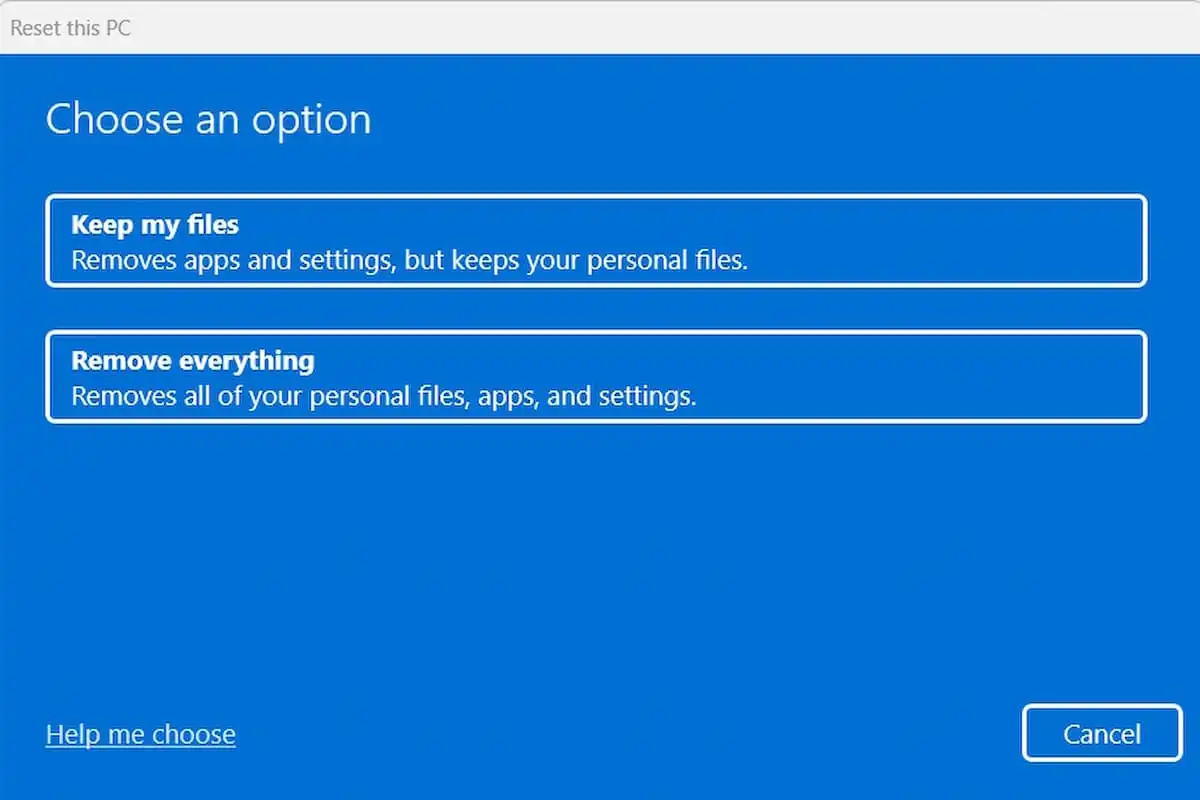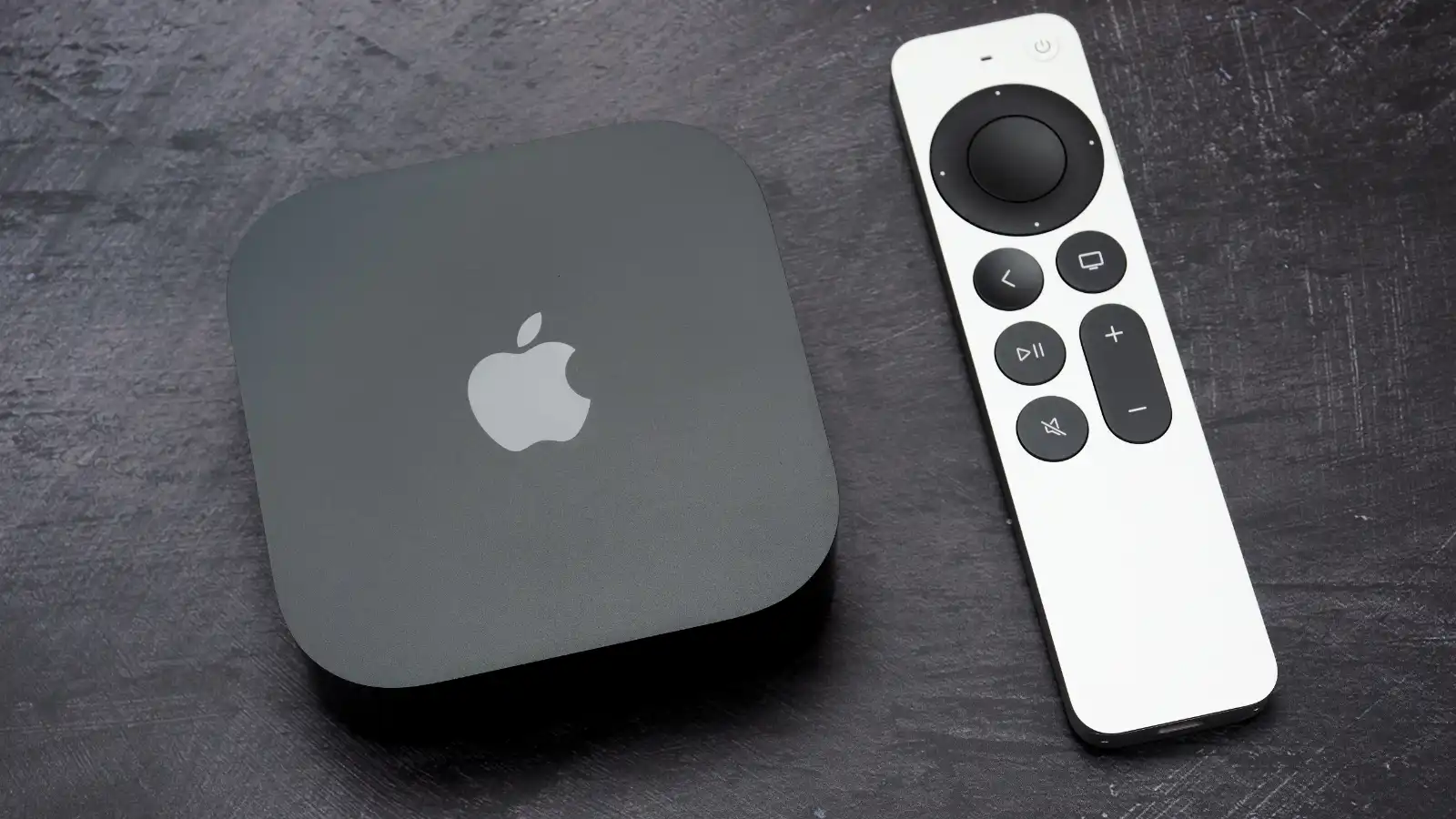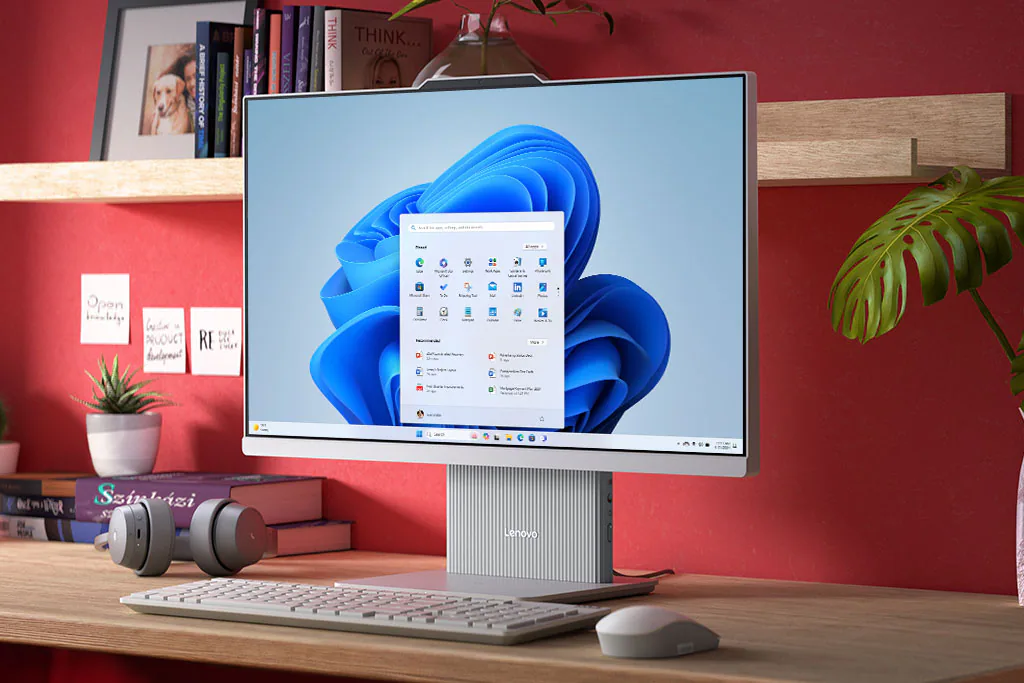There’s a clear reason to get one and wait on the other.
I spent 30 minutes in an intense boxing workout. My heart rate hit 150, and I could feel it. It was great. Coach Doc is serious. I followed through and did a cool-down exercise — and all of this happened inside the Meta Quest 3. Then I wiped down the headset and then got back to work… inside the Apple Vision Pro.
That describes my life in mixed-reality headsets lately. Meta’s $500 Quest 3 and Apple’s $3,500 Vision Pro feel very different but also very much the same; it just depends on how you look at them.
I’ve had VR and AR devices in my life for years, but for many people, the decision to put an immersive device on your face is still pretty new. Apple is the latest company entering a space where Meta, aka Facebook, has been for nearly a decade. The Meta Quest 2 was my favorite VR headset ever made, and it was affordable. But the Quest 3 and Vision Pro, both introduce ideas that will influence the landscape for years.
The Vision Pro, which feels like an iOS device in mixed-reality headset form, seems like the beginning of an entirely new proposition. Its displays are fantastic, as is the way it multitasks apps. Its eye and hand tracking, while handling FaceTimes and more with virtual Persona avatars, can feel like a revelation.
But if you want something affordable you can use to play with mixed reality and games and fitness right now (with a few work-related benefits, too), the choice should be the Quest 3 for nearly everyone. Here’s why.
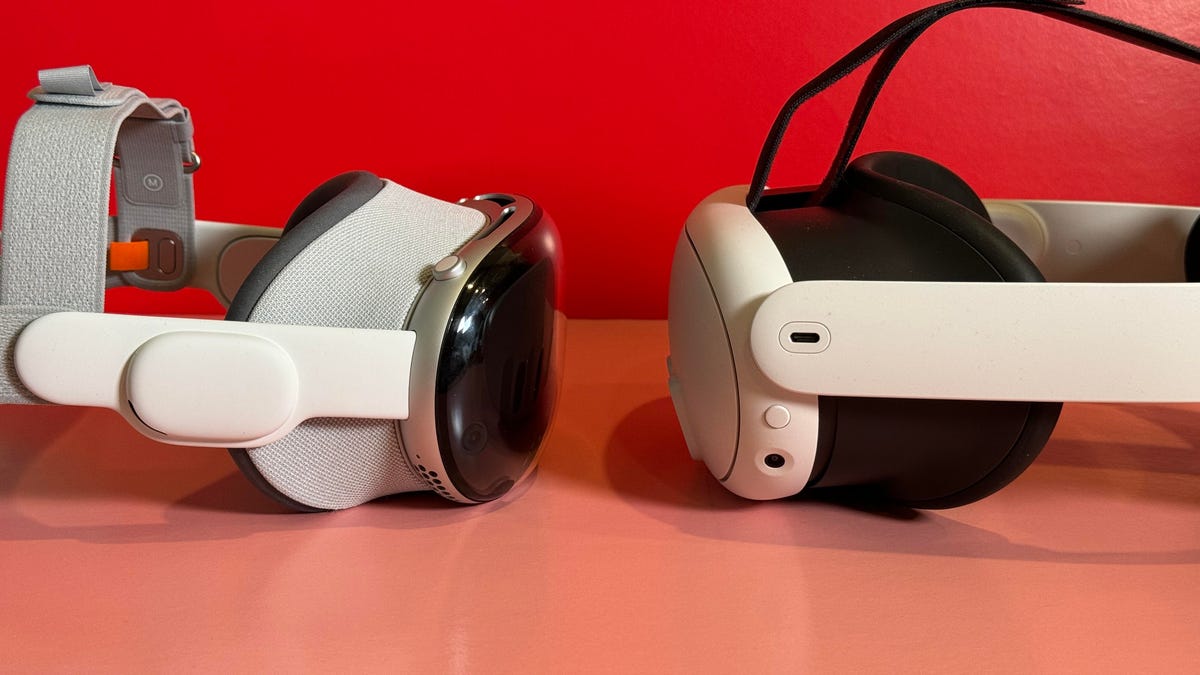
Mixed reality: Virtual blends with the real, to different degrees
The Meta Quest 3 and Apple Vision Pro are both standalone VR headsets with mixed-reality passthrough capabilities. These goggle-like headsets, which tighten over your face, have arrays of cameras on the outside that capture the real world and show it to you on displays inside. Virtual displays, games and even 3D objects can be layered over the real world. Each headset uses depth sensors to accurately mesh your real-world space with these virtual objects.
The Quest 3’s color camera quality is much better than the Quest 2’s black-and-white cameras, but the view is still fuzzy and somewhat distorted. The 3D video feed is good enough to see things around you, and to check messages on a phone or watch — but you may have to squint a bit. I found it hard to see my laptop screen, though.
The Vision Pro’s cameras are much sharper and are good enough to briefly use your phone through the headset. They’re still not as good as your own vision, though, and Apple’s micro-OLED displays have a bit of motion blur.
Meta and Apple allow apps to float over the real world, but the Quest 3 can only run one app at a time, unless you’re using the browser and a 2D app. The Vision Pro can multitask with many apps simultaneously, making it feel more like a real office tool.
But Apple’s headset doesn’t use the dimensions of your real-world much for immersive mixed reality experiences yet, even though it’s constantly pinging your space. It mostly floats 2D windows, although apps like Jigspace, DJay and 3D board games, show where things could go next. The Quest 3 has some mixed-reality games, fitness apps and creative tools that turn walls and floors into portals and playgrounds, but not a huge amount. Apple’s hardware is better, but no headset is making the most of mixed reality. Passthrough is mostly useful for helping you see the space around you without feeling as closed in.
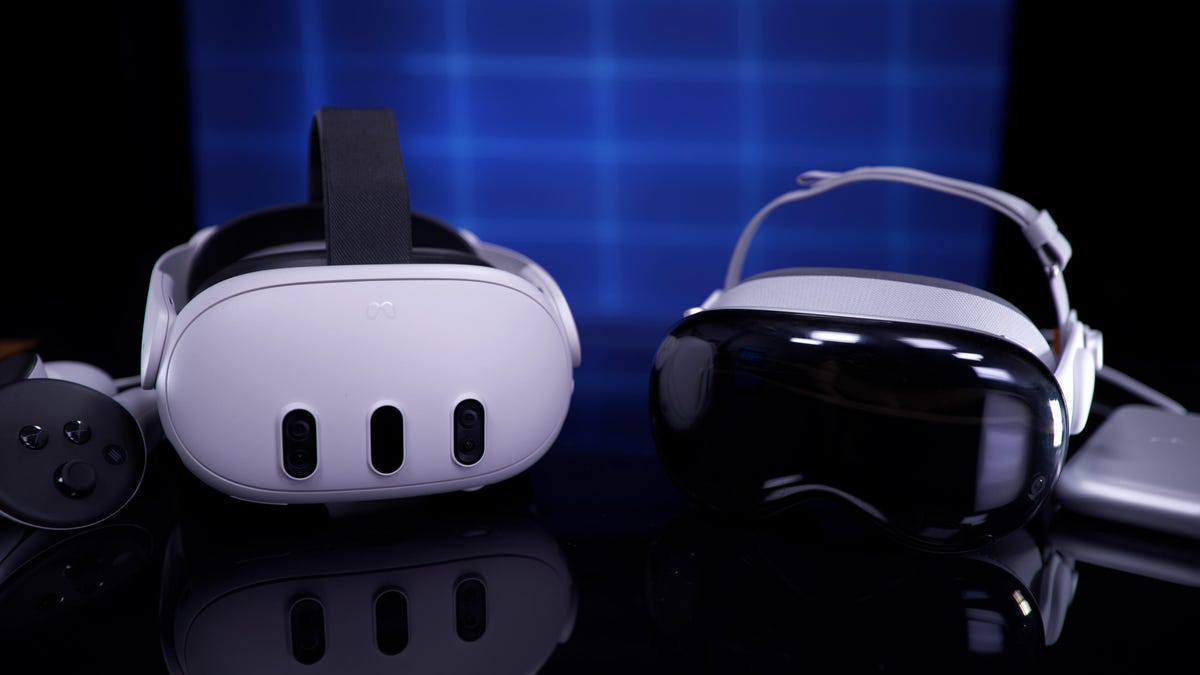
Work: Both can do it, but Apple is better
Apple’s fancier Vision Pro has the edge when it comes to feeling like a crisp monitor on your face. Those bright micro-OLED displays make a projected MacBook screen, any 2D app or photos or videos look stellar. But the Vision Pro limits you to one virtual Mac monitor at a time — no matter how powerful your Mac is. The Quest 3, surprisingly, can do multiple monitors from a Mac (or Windows PC) with apps like Immersed, and Meta’s Horizons Workrooms can meet those needs, too. Both headsets support connecting Bluetooth keyboards and trackpads as well.
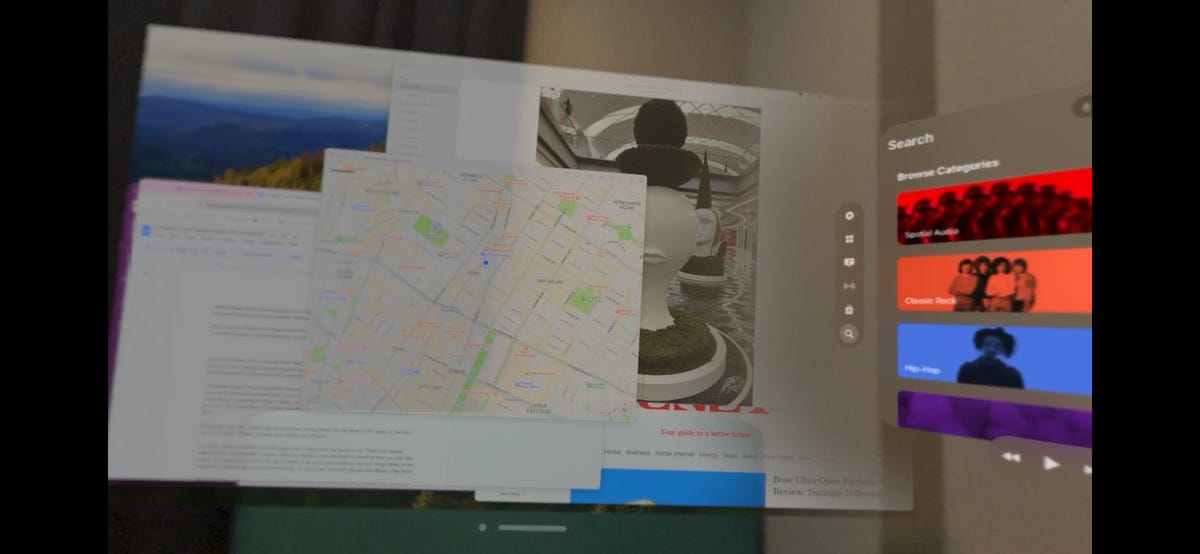
That’s just using your headset as a display for your computer, though. Where the Vision Pro has a longer-term edge is its access to thousands of iOS apps. These can be opened and multitasked all around you. Then there’s Siri and Apple’s other services, which run mostly like they do on iPads or iPhones. FaceTime call? Zoom? Slack? Microsoft Office? Apple Music? Yes to all of them.
Meta also has a collection of 2D apps, including Microsoft Office apps, but the Quest’s OS isn’t part of Google’s ecosystem. You need to sign into apps one by one or find Facebook apps to hook in with. The process isn’t nearly as seamless. But Apple’s headset has tons of first-gen bugs, too.
The multitasking capabilities of the Vision Pro are a huge advantage. Apps can be opened simultaneously all over, making the OS feel much more flexible than Quest’s.

Games: Quest is a VR game console, Vision Pro is not yet
My kids use the Quest 2 for Gorilla Tag, Beat Saber and lots of other games. It’s a game console. Meta has invested in developing hundreds of games, and plenty of great ones exist. The Quest headsets can also connect to a Windows PC and play Steam VR games like Half-Life Alyx, too. The Quest 3 is better designed for this than its predecessor, with its improved displays and wireless connections. The Quest headsets are priced like game consoles, running $250 to $500 (with additional cost for more onboard storage).
The Vision Pro has a handful of games so far, but none I’d call amazing. Some, like the active game Synth Riders (also on Quest) and the clever puzzle game BlackBox, show what games could be on the Vision Pro. But the headset only has eye and hand tracking as inputs. These work well for browsing and OS interaction, but less so for immersive games at the moment. Meta’s Quest 3 has both hand tracking and included controllers, which helps a ton when gaming. The controllers are excellent for high-speed action like Beat Saber, and have helpful vibration feedback. Hand tracking is the flip side of Vision Pro: It’s not great for browsing, but better in 3D games that use the inputs.
The Vision Pro and Quest 3 can play 2D games on virtual big screens with paired controllers: the Quest 3 has Steam Link and Xbox cloud gaming, but Vision Pro is limited to Apple Arcade, iOS and whatever you might run from a MacBook.
Don’t get a Vision Pro for games. Get a Quest 3.
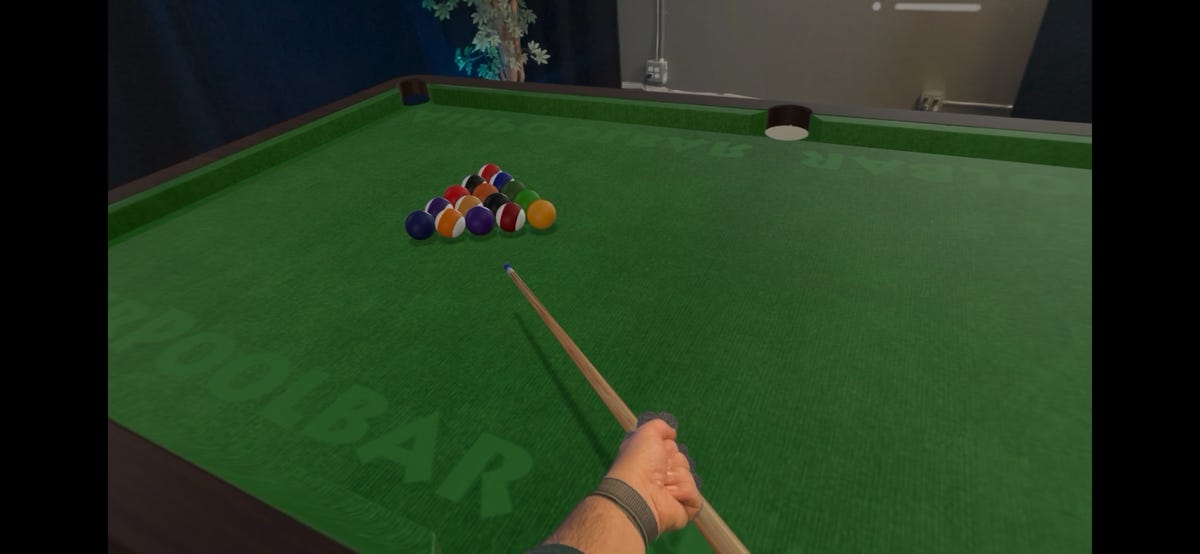
Fitness: My favorite VR activity is mostly Quest-only
I’ve become a big VR fitness fan lately. Supernatural, a subscription-based dance and boxing program that uses holograms of real trainers and pairs with an Apple Watch for heart-rate readings, is a part of my daily routine. Many people use the Quest is a fitness device, mainly because these active exercise apps are widespread. The Quest can do some basic activity tracking, which hooks into iOS and Android.
The Quest 3 has almost entirely become a fitness device for me. That’s a role the Vision Pro can’t fill right now because the apps and the fitness ecosystem support simply aren’t there.
There are a few active apps for the Vision Pro: Synth Riders, for instance, is a dance and music game, but it’s also available on the Quest. Using only my hands means there’s no vibrating haptic feedback, which I get with Meta’s controllers and is key for letting me know when I hit targets. The Vision Pro’s weight and battery pack also make it feel less fitness-ready. There are a few meditation apps in the Vision Pro’s app store, so mindfulness is an area for growth. Still, the Quest 3 is much more fitness-forward.
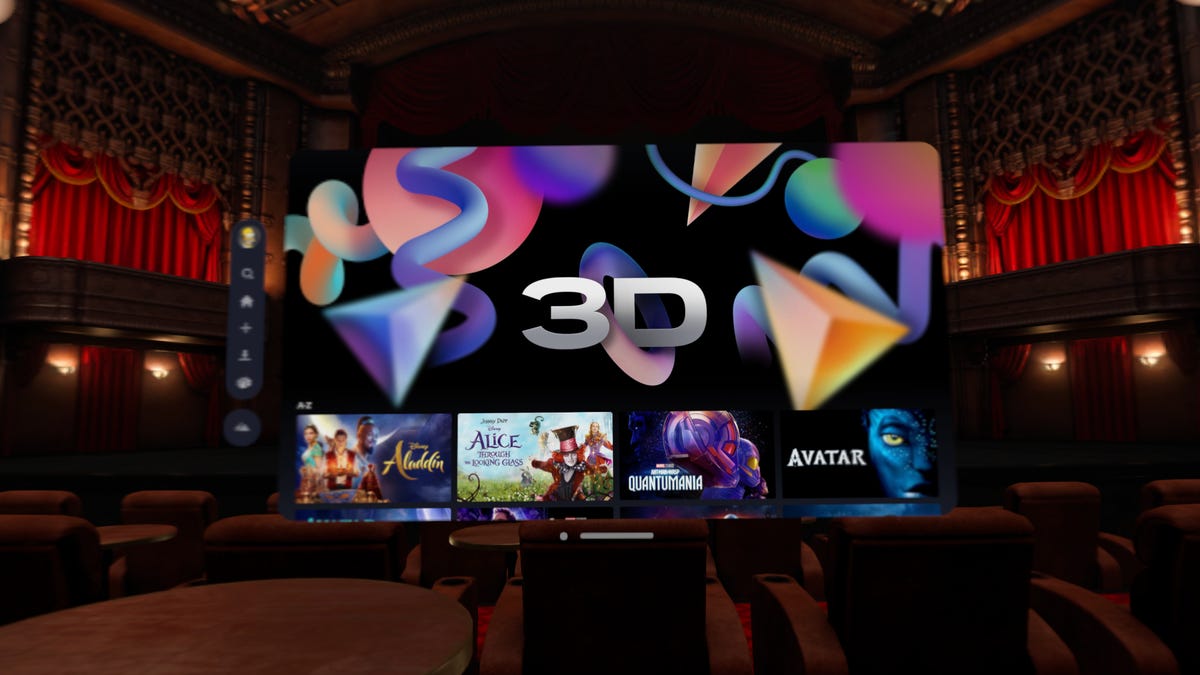
Video: Apple’s headset can’t be beat, except with immersive web VR video
For playing movies, personal videos, or basically any video, Apple’s Vision Pro is a revelation. If you can find a comfortable fit for the headset, its displays create a cinema-like experience. The Quest 3 can also play videos, but the experience is night and day. The Quest 3 display is acceptable for video, but worse than my phone or iPad. The Vision Pro, meanwhile, is better than my TV. Movies feel special. My own videos look good. Apple also has many more streaming partners out of the gate: Apple TV, Amazon Prime Video, Paramount Plus, Max, Disney Plus as well as apps like Criterion and Mubi. Others, like Netflix or YouTube, can be viewed in the Safari browser.
Meta has Prime Video and Netflix apps, and a Meta TV app for video discovery, plus apps like BigScreen VR that hook into streaming platforms. The Quest also has a browser. But for me, using Apple’s ecosystem, it’s far easier to log into apps on the browser on the Vision Pro using saved passwords and account settings.
The Quest headsets can do one thing Vision Pro can’t, though: Play 360-degree and VR180 video content on YouTube and elsewhere on the web. There’s a lot out there (some of it on, ahem, apps you might use in your private time), and Apple for now is sitting out on compatibility with these older formats.
Apple does have its own Immersive Video format it uses in a handful of shows on Apple TV Plus, and it looks markedly better than older VR180 videos. Apple seems set to roll out more in this format, but it’s unclear when.

Spatial videos: They can both do it
Apple’s headset plays self-shot 3D videos recorded on either the Vision Pro or on the iPhone 15 Pro, and does a great job at it. They feel like snippets of relived memories. Not to be left out, the Quest 3 added spatial video playback recently, and it syncs Apple’s iPhone videos. They don’t play as high-res or as smoothly as on Vision Pro, based on initial tests, but they do play. Expect Meta to make its own 3D cameras (likely updated versions of its Ray-Ban glasses) to compete and offer a more affordable way to share memories with family.
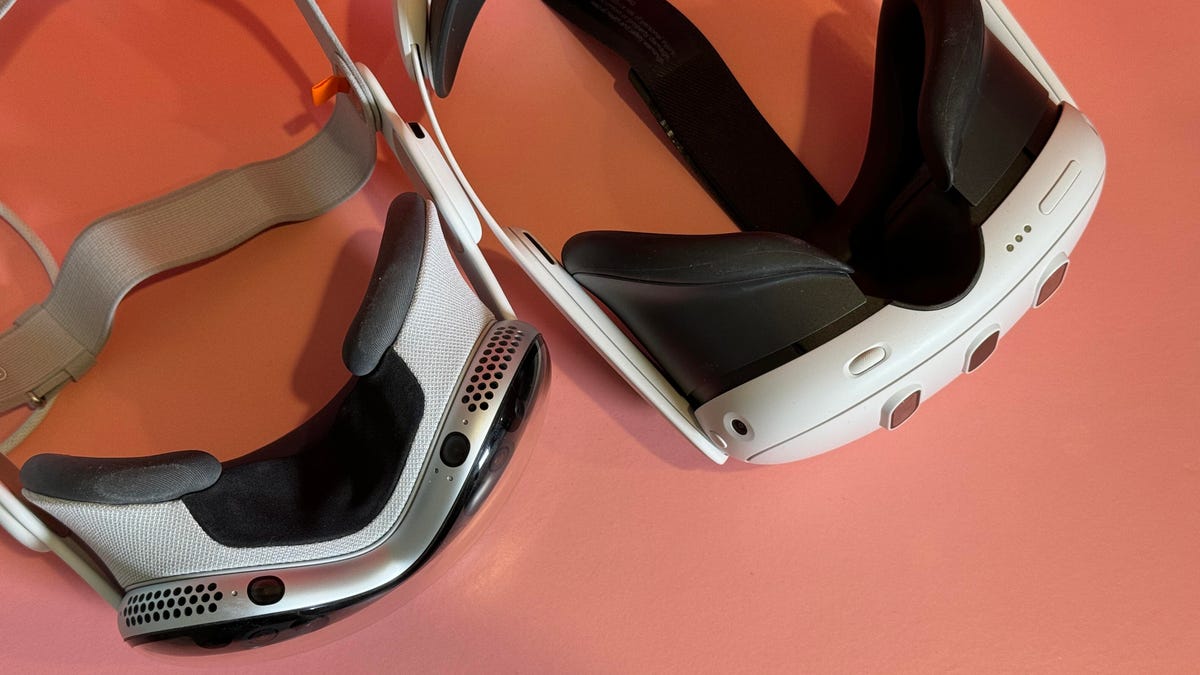
Sharing: Quest is far, far easier
Simply put, the Vision Pro is not meant to be shared with friends, family or anyone else… yet. The Vision Pro is customized to fit, with differently sized headbands, light seals and light seal cushions that are personalized with a head scan. It doesn’t work with glasses, either, so prescription lens inserts are necessary.
There’s a Vision Pro guest mode that can share apps with others, but the guest needs to go through eye-tracking setups before use, and if they take the headset off, they have to do it all over again. Apple doesn’t have an app you can use to monitor and manage someone else’s headset experience; all there is is AirPlay, which can sometimes lose connection. And it has bizarre quirks. For example, if you’re sharing a movie for someone to see (a likely thing, on Vision Pro), the content will be blacked out for them, and you, if you’re using AirPlay to help guide and observe the person in the headset.
The Quest 3 supports multiple user accounts and works with glasses. The headbands and face mask pieces are universal, so there’s no worry about fit (but the headset won’t always feel comfortable for everyone). Meta also has an iOS and Android app that allows you to remotely start and stop casting a view of what’s happening in the headset for the person trying it out. The app can launch experiences, and re-center the display for them. Apple needs an app like this for the Vision Pro.
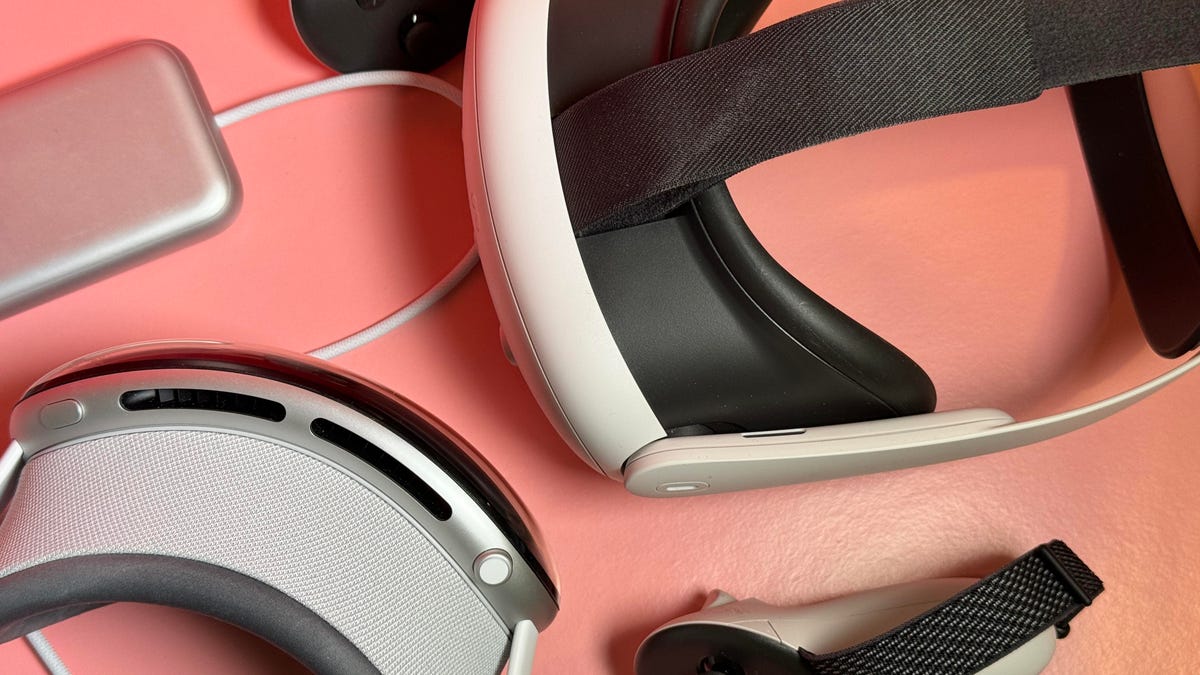
The future will look more like the Vision Pro
Apple’s headset is stunning for videos and films, and it’s the best VR/AR headset I’ve used for laptop-style 2D work. However, the headset’s potential lies in the future. Apple’s room-tracking sensors should blend the real and virtual more, and Apple’s iOS framework should enable sharing and collaboration in virtual spaces better than any other device. But those things haven’t fully evolved yet. Also, why doesn’t the Vision Pro work with AR-capable iPhones and iPads yet? Why doesn’t the wearable, haptics-equipped Apple Watch offer feedback in virtual experiences? I don’t know, but they should be part of the picture.
The Vision Pro is only a few weeks old, whereas the Quest platform is five years old. Meta had VR hardware for years before that, too. If you’re curious about VR and AR, the Quest 3 is still the best affordable headset to play with and try mixed reality. The Vision Pro has parts that totally outshine it, but it’s also something I’d very much wait on for its extremely high price. And don’t forget: Meta, in addition to Samsung and Google, have next-gen hardware in the works also. The Quest 3 is the easiest recommendation for now, but Apple’s hardware is going to be the shape of the where the landscape is heading in the years to come.


